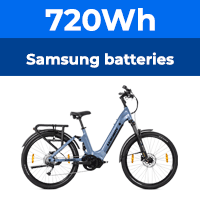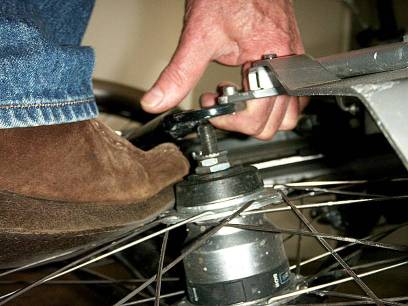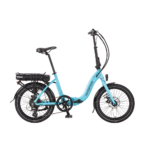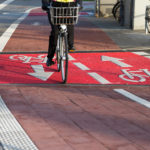I took a trip to the post office this morning to collect some goodies; a new controller, throttle and PAS sensor:

Work never went as slowly as I couldn't wait to get home and make some serious headway on the ghEttoBIKE

I removed the old wheel and moved the 5 speed freewheel onto the hub motor wheel (might upgrade the gearing and shifter at a later date). I was surprised at how easy it was to spread the dropouts with some good ol' fashioned brute force. Using my foot for leverage, it didn't take much effort to pull them apart the required amount. The new wheel slotted in nicely and was flush with the frame with a few blows with a rubber mallet. Finally i tightened the axle nuts (BTW, can anyone tell me how much torque should be applied?)
Next I hooked up the controller to the motor and wired up the throttle. I chose a 10 amp fuse for the battery, crossed my fingers and plugged it in to the controller.

No smoke or funny smells - always a good start. Picking up the throttle, I prayed, twisted it........ and got some movement, but it's clearly not what it should be. The motor clicks several times, then stops. During this clicking, the wheel may rotate randomly as each click occurs. Is this a phase issue?
When I repaired the motor last week, I couldn't find the correct coloured wire, so used a thick 3 core mains cable. I'm pretty sure that I haven't got the wires muddled up in reference to their new colours, but I guess I could have. I want to just swap them over at the controller to try an alternative phasing, but obviously don't want to damage anything if it's already wired in correctly. Is it okay to do this?














